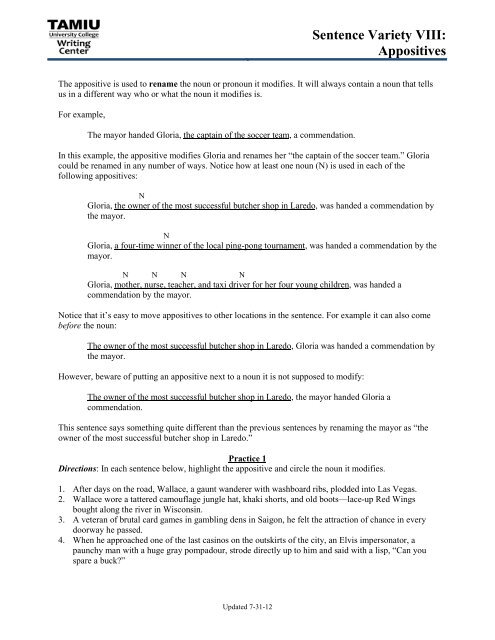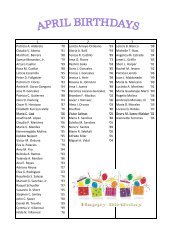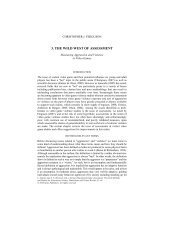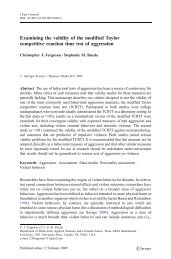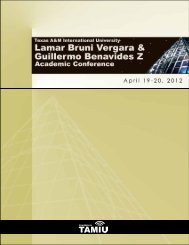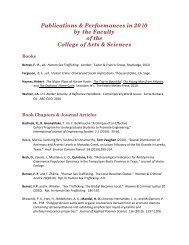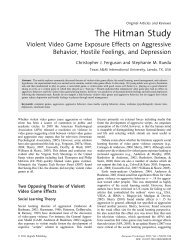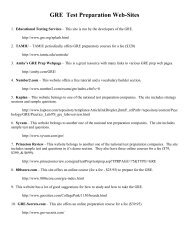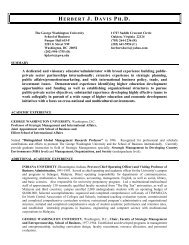Appositives
Appositives
Appositives
Create successful ePaper yourself
Turn your PDF publications into a flip-book with our unique Google optimized e-Paper software.
Updated 7-31-12<br />
Sentence Variety VIII:<br />
<strong>Appositives</strong><br />
The appositive is used to rename the noun or pronoun it modifies. It will always contain a noun that tells<br />
us in a different way who or what the noun it modifies is.<br />
For example,<br />
The mayor handed Gloria, the captain of the soccer team, a commendation.<br />
In this example, the appositive modifies Gloria and renames her “the captain of the soccer team.” Gloria<br />
could be renamed in any number of ways. Notice how at least one noun (N) is used in each of the<br />
following appositives:<br />
N<br />
Gloria, the owner of the most successful butcher shop in Laredo, was handed a commendation by<br />
the mayor.<br />
N<br />
Gloria, a four-time winner of the local ping-pong tournament, was handed a commendation by the<br />
mayor.<br />
N N N N<br />
Gloria, mother, nurse, teacher, and taxi driver for her four young children, was handed a<br />
commendation by the mayor.<br />
Notice that it’s easy to move appositives to other locations in the sentence. For example it can also come<br />
before the noun:<br />
The owner of the most successful butcher shop in Laredo, Gloria was handed a commendation by<br />
the mayor.<br />
However, beware of putting an appositive next to a noun it is not supposed to modify:<br />
The owner of the most successful butcher shop in Laredo, the mayor handed Gloria a<br />
commendation.<br />
This sentence says something quite different than the previous sentences by renaming the mayor as “the<br />
owner of the most successful butcher shop in Laredo.”<br />
Practice 1<br />
Directions: In each sentence below, highlight the appositive and circle the noun it modifies.<br />
1. After days on the road, Wallace, a gaunt wanderer with washboard ribs, plodded into Las Vegas.<br />
2. Wallace wore a tattered camouflage jungle hat, khaki shorts, and old boots—lace-up Red Wings<br />
bought along the river in Wisconsin.<br />
3. A veteran of brutal card games in gambling dens in Saigon, he felt the attraction of chance in every<br />
doorway he passed.<br />
4. When he approached one of the last casinos on the outskirts of the city, an Elvis impersonator, a<br />
paunchy man with a huge gray pompadour, strode directly up to him and said with a lisp, “Can you<br />
spare a buck?”
Updated 7-31-12<br />
Sentence Variety VIII:<br />
<strong>Appositives</strong><br />
5. “Do I look like I have any money?” Wallace said. He turned both pockets in his pants inside-out, but<br />
in his left boot his toes wiggled against the remains of his fortune, a damp, thin mass of tens and<br />
twenties.<br />
Punctuating appositives<br />
Nonrestrictive appositives provide nonessential information rather than information essential to the<br />
meaning of the sentence. Therefore, they are set off from the rest of the sentence with a comma or<br />
commas.<br />
Ex. Pete Furth, the butcher in my hometown in Minnesota, looks just like the actor William Devane.<br />
Without the appositive—“the butcher in my hometown in Minnesota”—the reader still knows who<br />
resembles William Devane: Pete Furth. However, restrictive appositives—those that contain information<br />
essential to the meaning of the sentence—are not set off with commas, as in this example:<br />
The Nobel-Prize winning poet Pablo Neruda often wrote of love and the sea.<br />
Because more than one poet has won the Nobel Prize, the appositive “Pablo Neruda” is essential<br />
information; without it, the reader will ask, “Which Nobel-Prize winning poet wrote about love and the<br />
sea?” Consequently, no commas set off the appositive from the rest of the sentence.<br />
Practice 2<br />
Directions: Add each appositive below to a sentence of your own. Place two appositives at the front, in<br />
the middle, and at the end of some sentences. Also make sure some appositives are restrictive and others<br />
nonrestrictive. Remember to punctuate your sentences correctly.<br />
1. a large gray-haired woman with huge hoop earrings<br />
2. the only one of its kind still on the market<br />
3. a pale limb with ragged, festering wounds<br />
4. black, towering formations that rose up on the horizon<br />
5. a 1968 Corvette with a T-roof and a 427 engine<br />
6. the Spurs power forward


